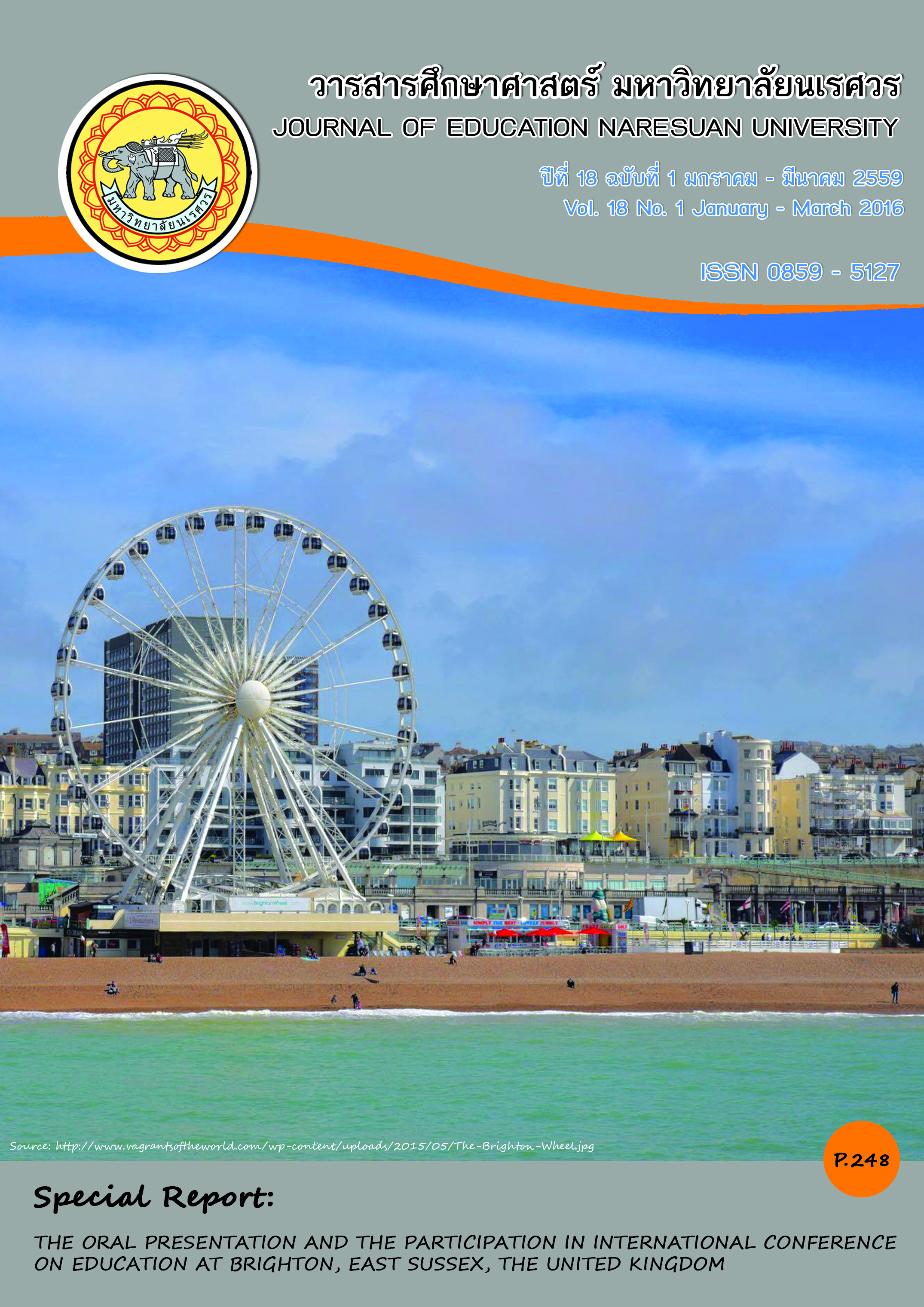เด็กสองภาษา: สร้างได้ในวัยอนุบาล
Main Article Content
Abstract
บทคัดย่อ
การพัฒนาเด็กวัยอนุบาลให้เป็นเด็กสองภาษาเป็นประเด็นที่ได้รับความสนใจอย่างแพร่หลายทั้งในกลุ่มของนักวิชาการด้านการศึกษาปฐมวัยและกลุ่มผู้ปกครอง ยิ่งประเทศไทยกำลังจะก้าวเข้าสู่การเป็นสมาชิกของประชาคมเศรษฐกิจอาเซียนที่ใช้ภาษาอังกฤษเป็นภาษากลางในการติดต่อสื่อสารซึ่งกันและกัน ยิ่งทำให้การสอนภาษาอังกฤษในสถานศึกษาได้รับความสนใจมากยิ่งขึ้น ไม่เว้นแม้แต่ในระดับปฐมวัย ในการสอนภาษาที่สองให้เด็กวัยอนุบาล พ่อแม่และครูจำเป็นต้องศึกษาและทำความเข้าใจแนวคิดเกี่ยวกับการเรียนรู้ภาษาของเด็ก ซึ่งมีแนวคิดที่สำคัญอยู่ 3 แนวคิด คือ แนวคิดของกลุ่มจิตภาษาศาสตร์ แนวคิดของกลุ่มพฤติกรรมนิยม และแนวคิดของกลุ่มสันตานนิยม ซึ่งแต่ละแนวคิดมีมุมมองในการเรียนรู้ภาษาของเด็กที่แตกต่างกัน นอกจากแนวคิดดังกล่าวแล้วยังมีปัจจัยหลายอย่างที่มีผลต่อการเรียนรู้ภาษาที่สองของเด็ก ตั้งแต่ลักษณะภาษาที่เด็กจะเรียนรู้ ตัวเด็กเอง พ่อแม่ ครู และชุมชนที่เด็กอาศัยอยู่ ล้วนมีอิทธิพลต่อการเรียนรู้ภาษาที่สองของเด็กทั้งสิ้น บุคคลที่มีบทบาทสำคัญในการพัฒนาเด็กวัยอนุบาลให้เป็นเด็กสองภาษา คือพ่อแม่และครูที่ต้องร่วมกันพัฒนาเด็กให้ไปในทิศทางเดียวกัน ด้วยการสร้างทัศนคติที่ดีต่อภาษา จัดกิจกรรมให้เด็กเรียนรู้ภาษาแบบธรรมชาติ ที่ให้ความสำคัญกับการให้เด็กได้ฟังภาษาจากเจ้าของภาษาผ่านสื่อและอุปกรณ์ต่างๆ รวมตลอดถึงการเป็นตัวแบบที่ดีในการพูดให้แก่เด็ก
คำสำคัญ: เด็กสองภาษา/ วัยอนุบาล
BILINGUAL CHILDREN: STARTING FROM PRE-SCHOOL AGE
Abstract
The development of pre-school age children to become bilingual children is the issue that receives widespread interest from both the group of pre-school children educators and the group of parents. As Thailand is about to join the ASEAN Economic Community that uses English as the common language for communication among member countries, the teaching of English in school has received greater interest even at the pre-school level. In teaching a second language to pre-school children, the parents and teachers need to study and understand theories concerning language learning of pre-school children. There are three main theories on language learning of pre-school children, namely, the psycholinguistics theory, the behaviorism theory, and the innatism theory. Each of these theories presents different viewpoints on pre-school children’s language learning. Besides these theories, there are many factors affecting second language learning of pre-school children, such as the characteristics of the second language to learn, the children themselves, the parents, the teacher, and the community in which the children live. All of these factors have influences on the children’s second language learning. The persons with the main role in developing pre-school children to become bilingual children are parents and teachers who have to cooperate to guide the children’s development in the same direction by instilling good attitudes toward the language, organizing activities to enable the children to learn the language in the natural way that puts emphasis on having the children listen to language expression from native speakers via media and instructional aids. Also, they should act as good models for the children in speaking the language.
Keywords: Bilingual children/ Pre-school age
Article Details
The owner of the article does not copy or violate any of its copyright. If any copyright infringement occurs or prosecution, in any case, the Editorial Board is not involved in all the rights to the owner of the article to be performed.


